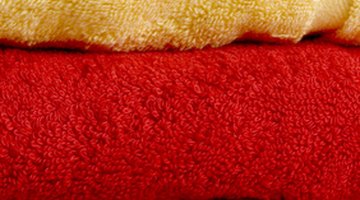10 Common Types of Absorbents
Table of Contents
Absorbents are materials that will keep your workplace clean and safe. There are various types of absorbents and it depends on the spill or mess that needs to be handled that will determine your choice of absorbent.

They also come in various forms such as absorbent socks and pillows, spill mats and pads, industrial rugs and reusable absorbents.
Universal Absorbents
Universal absorbents are an absorbent solution typically used for all industrial and commercial spill control. They come in different configurations like absorbent mats, pads, pillows, rolls and booms. Universal absorbents are multipurpose that includes handling solvents, water, oil and other types of liquids. This helps in cleaning floors and the prevention of falling or slipping.
Oil Absorbents
Oil absorbents repel water and are specifically for oil cleanup only. They are able to absorb the oil without also absorbing the water, making them perfect for oil cleanup and containment on or near large bodies of water. They can be used indoors or outdoors. They're available in different configurations like absorbent socks, sweeps, pads, booms, rolls and drip pans.
Absorbent Pillows and Pads
A pillow is a fabric bag filled with absorbent material, used for rapid absorption of high volumes of liquid in a limited area. A pad is a sheet of absorbent material used to control low-volume spills and help to prevent physical hazards and protect surfaces from damaging liquid materials.
Absorbent Socks
Absorbent socks can be used for a variety of solvents as well as for cleaning up spills on outdoor equipment and machine bases. Oil socks are used to absorb oil and to wrap machines to prevent spilling on the floor. There are different types of filler in socks. Some examples include corn cob, cellulose, vermiculite and polypropylene.
Loose Absorbents
Commonly used absorbents come in the form of granular sand that's poured on the spill’s surface. These floor sweeps can absorb a variety of spills including oil, coolants and other solvents. They have uses in many areas including factories, hospitals, schools, office buildings, gas stations, warehouses and restaurants.
Specialty Absorbents
Neutralizers handle hazardous material spills, including caustics, acids, solvents and formaldehyde. Absorbent polymers solidify hydrocarbon or oil spills. Mercury spill kits provide safe cleanup and vapor suppression. They also come in wraps and mats.
Reusable Absorbents
Rags and towels are commonly used absorbents that are considered reusable because they may be laundered. Some granular absorbents are made from recycled material and are reusable or can be burned for energy recovery. Some other reusable absorbents come in the form of socks, sheets, rolls, pads and pillows.
Booms and Skimmers
Booms and skimmers are ideal for sweeping oil from streams, ponds and other bodies of water to keep them from harming the environment. They keep waterways clean of petroleum-based liquids and other contaminants. Oil sweeps and oil skimmers come in the form of sump socks and pillows and oil containment booms.
Hazmat Absorbents
Hazmat absorbents are ideal for chemical spills of bio-hazardous liquids in both industrial and commercial environments. They're part of spill kits and are available as mats, pads, rolls, socks, dikes and booms. They are used on land because they do not float in water. Hazmat absorbents also absorb water-based fluids like gas, hydraulic fluids, coolants, acetone, hexane and turpentine.
Traffic Rugs
Traffic rugs are meant to be walked on to absorb fluids. They can be used in areas of high foot traffic or next to frequently used equipment. A variety of this type of absorbent material is available, depending on which is most suitable for the job. They come in boxes, rolls and a number of different lengths which may be cut into dimensions that are specific to the job.
The Drip Cap
- Absorbents are materials that will keep your workplace clean and safe.
- They come in different configurations like absorbent mats, pads, pillows, rolls and booms.
- Oil absorbents repel water and are specifically for oil cleanup only.
- They are able to absorb the oil without also absorbing the water, making them perfect for oil cleanup and containment on or near large bodies of water.
- Oil socks are used to absorb oil and to wrap machines to prevent spilling on the floor.
- Rags and towels are commonly used absorbents that are considered reusable because they may be laundered.
- They keep waterways clean of petroleum-based liquids and other contaminants.
- Hazmat absorbents also absorb water-based fluids like gas, hydraulic fluids, coolants, acetone, hexane and turpentine.
References
Writer Bio
Cee Donohue started as a comedy writer in 2004. She has written for "One to One Magazine" and the "South Hollywood News." Before moving to Los Angeles, Donohue attended the University of the Arts.
Photo Credits
- bath towels image by robert lerich from Fotolia.com
- bath towels image by robert lerich from Fotolia.com
More Articles



